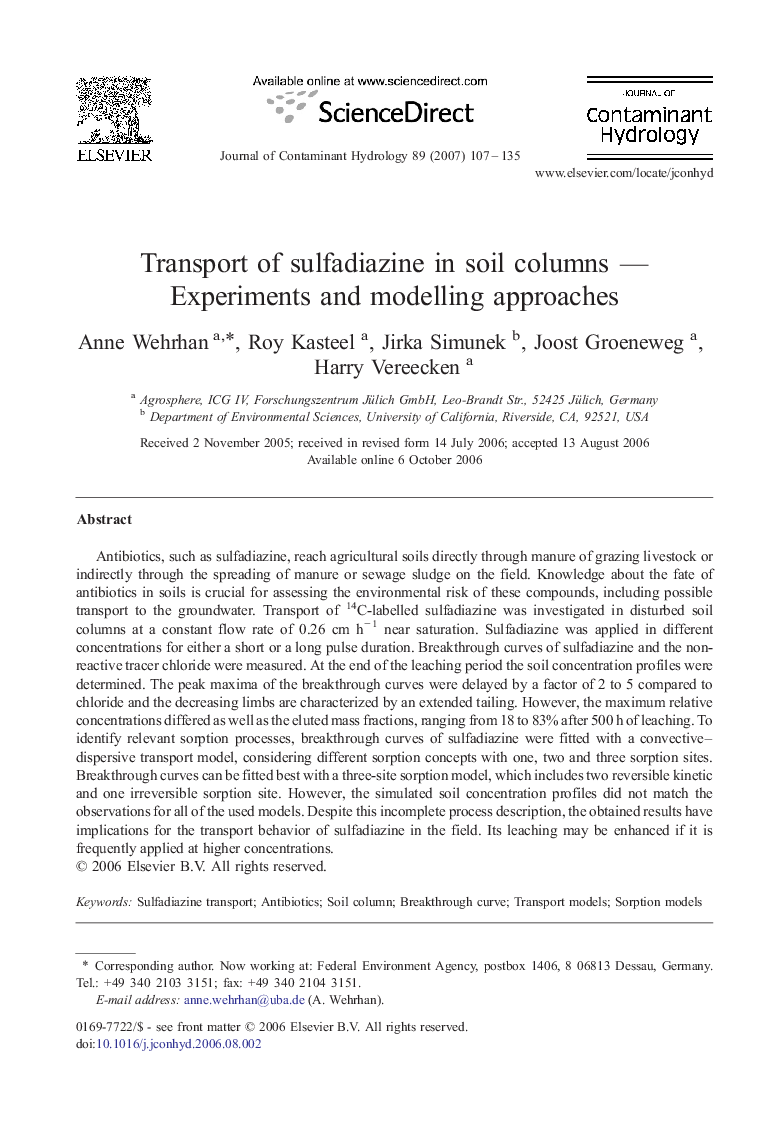| Article ID | Journal | Published Year | Pages | File Type |
|---|---|---|---|---|
| 4547750 | Journal of Contaminant Hydrology | 2007 | 29 Pages |
Antibiotics, such as sulfadiazine, reach agricultural soils directly through manure of grazing livestock or indirectly through the spreading of manure or sewage sludge on the field. Knowledge about the fate of antibiotics in soils is crucial for assessing the environmental risk of these compounds, including possible transport to the groundwater. Transport of 14C-labelled sulfadiazine was investigated in disturbed soil columns at a constant flow rate of 0.26 cm h− 1 near saturation. Sulfadiazine was applied in different concentrations for either a short or a long pulse duration. Breakthrough curves of sulfadiazine and the non-reactive tracer chloride were measured. At the end of the leaching period the soil concentration profiles were determined. The peak maxima of the breakthrough curves were delayed by a factor of 2 to 5 compared to chloride and the decreasing limbs are characterized by an extended tailing. However, the maximum relative concentrations differed as well as the eluted mass fractions, ranging from 18 to 83% after 500 h of leaching. To identify relevant sorption processes, breakthrough curves of sulfadiazine were fitted with a convective–dispersive transport model, considering different sorption concepts with one, two and three sorption sites. Breakthrough curves can be fitted best with a three-site sorption model, which includes two reversible kinetic and one irreversible sorption site. However, the simulated soil concentration profiles did not match the observations for all of the used models. Despite this incomplete process description, the obtained results have implications for the transport behavior of sulfadiazine in the field. Its leaching may be enhanced if it is frequently applied at higher concentrations.
